Planning a trip can be hard. Jaipur has so much to offer. Jaipur, the Pink City, is a treasure trove of history, culture, and vibrant colors. Whether you’re a history buff or a shopaholic, Jaipur offers something special. From majestic forts to bustling bazaars, each corner tells a story. Here are the best places to visit in Jaipur for an unforgettable experience.
This guide on the “10 Best Places To Visit In Jaipur” will make it easy. Keep reading!
10 Best Places To Visit In Jaipur With Family
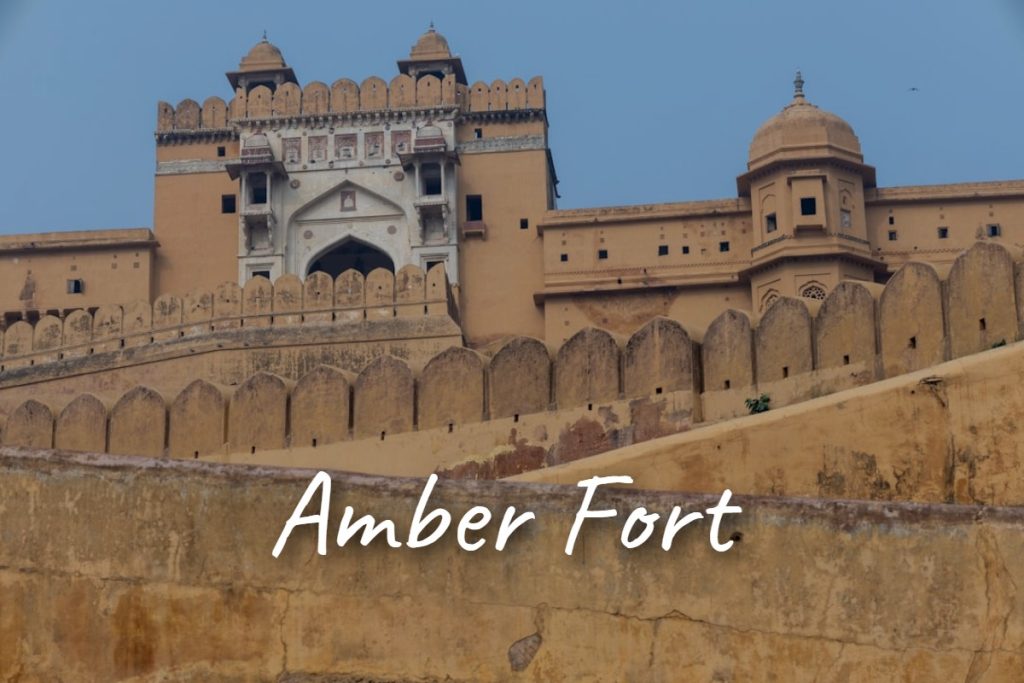
Amber Fort
Amber Fort stands as a grand example of ancient Indian architecture, inviting everyone with its majestic charm. Its blend of Hindu and Mughal styles tells stories from the past that await eager visitors.
Architectural Highlights
Amber Fort stands as a stunning example of medieval architecture, built by Sawai Jai Singh in 1740. This historic monument serves dual purposes as a fortress and royal residence, showcasing the lavishness of Rajput architecture.
Its compound includes puzzle-like passages and a royal area, reflecting cultural heritage through its elaborate design.
Amber Fort merges defense and elegance.
This tourist destination attracts many due to its intricate fortification and beautiful decor. Each part of the Amber Fort tells a historical narrative, making it more than a site to observe but an experience to immerse yourself in.
Moving on to the optimal visiting times…
Best Times to Visit
The best times to visit Amber Fort are early in the morning. The fort opens at 8:00 AM and offers cooler temperatures then. Visiting during this time helps you avoid crowds. It is also smart to wear comfortable shoes, as you will walk a lot.
Staying hydrated is key, too.
Another good time is in the late afternoon. The light is perfect for photography. You can explore the fort and enjoy the views without rushing. Peak visiting times can be from 10:00 AM to 2:00 PM, so plan around that.
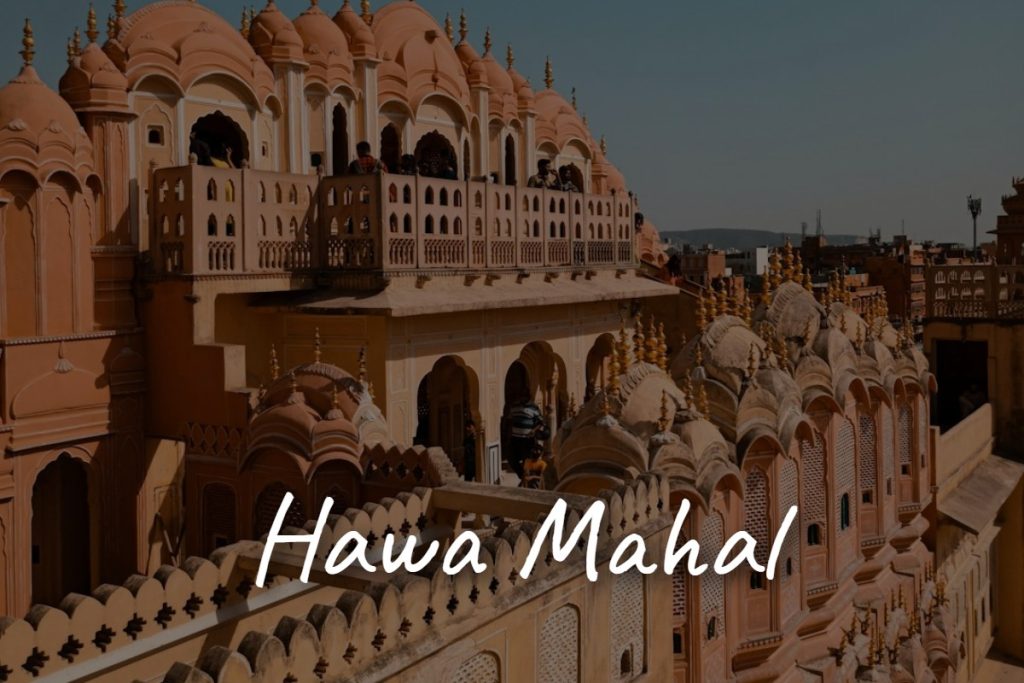
Hawa Mahal
Hawa Mahal is a stunning palace in Jaipur. Its unique design has many small windows, allowing cool air to flow inside.
Unique Structure and Design
The Hawa Mahal, built in 1799 by Maharaja Sawai Pratap Singh, is known as the “Palace of Winds.” This unique structure features a stunning facade with 953 small windows. These windows allow for cool breezes to flow through, making it comfortable inside.
The ornate design is an architectural masterpiece. It combines beauty with a clever ventilation system. The intricate facade showcases Indian culture and heritage. Visitors are often amazed by this impressive structure, which stands out in Jaipur’s skyline.
Visitor Tips
Hawa Mahal is a beautiful landmark in Jaipur. To enjoy it fully, keep these tips in mind.
- Visit Early or Late Afternoon: Mornings and late afternoons offer cooler temperatures and fewer crowds. This makes for a more enjoyable experience.
- Bring a Camera: Hawa Mahal has stunning views and unique architecture. Capture its beauty with your camera.
- Explore Different Levels: There are many levels to see in Hawa Mahal. Each one offers a different perspective of the palace.
- Be Cautious on Staircases: The staircases can be steep and narrow. Move carefully to avoid slips or falls.
- Entry Fee: Foreign visitors pay INR 50, while Indian citizens pay only INR 10. Keep this in mind when planning your visit.
- Timings: Hawa Mahal is open from 9:00 AM to 4:30 PM daily. Plan your visit during these hours.
- Look for Guided Tours: If you want more information, consider taking a guided tour. Guides share interesting facts and stories about the site.
- Stay Hydrated: It can get hot during the day, especially in summer months. Drink plenty of water while you explore.
- Dress Comfortably: Wear comfortable clothes and shoes as you will walk quite a bit while exploring the area.
- Respect Local Customs: Be polite and respectful while visiting this cultural site to enhance your experience at this historic place.
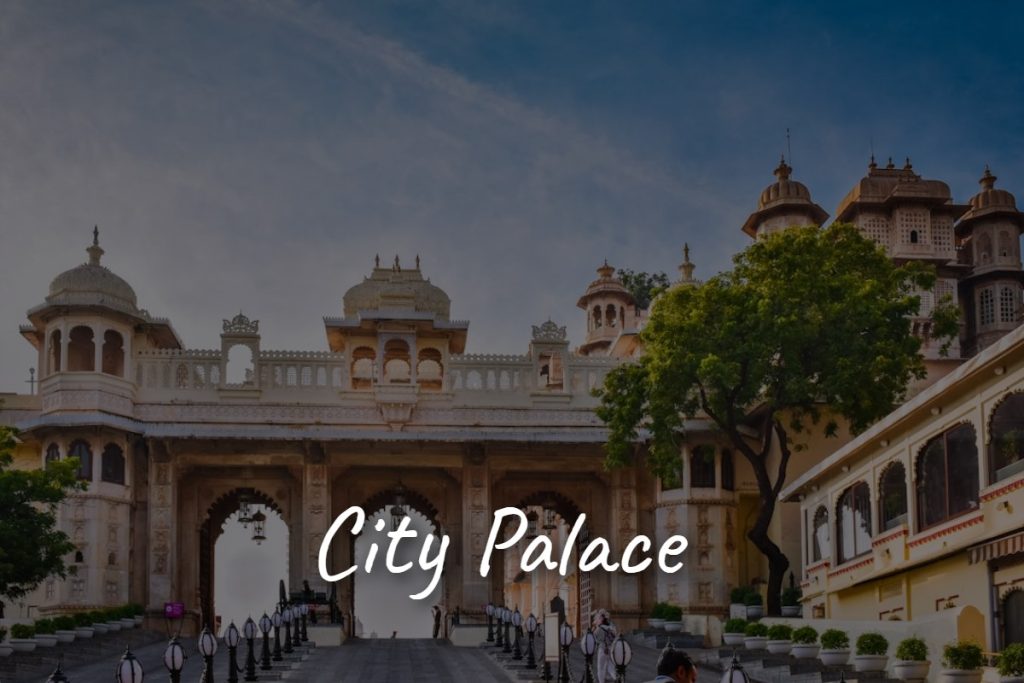
City Palace
City Palace is a stunning blend of architecture and history. It showcases the royal heritage of Jaipur with beautiful courtyards, gardens, and museums to explore.
Historical Significance
Amber Fort holds great historical significance. Built between 1729 and 1732 by Maharaja Sawai Jai Singh, it stands as an architectural masterpiece. This fort is part of a majestic complex that also includes the City Palace.
It occupies one-seventh of the walled city, making it a key landmark in Jaipur. The unique blend of Hindu and Mughal styles showcases the rich culture of the time. Visitors can see beautiful gardens, intricate carvings, and stunning views.
Amber Fort remains a cultural treasure for many.
Must-See Exhibits
The City Palace is rich in history and culture. It has many must-see exhibits that showcase its beauty.
- Armory Hall: This room displays old weapons and armor. Swords, shields, and guns tell tales of bravery.
- Textile Gallery: Here, you can see beautiful clothes worn by royalty. The fabrics are colorful and intricate, showing the art of weaving.
- Royal Procession Gallery: This exhibit features royal chariots and elephants used for parades. Each piece reflects the grandeur of past celebrations.
- Portrait Gallery: You will find many portraits of the royal family here. These paintings capture their elegance and power throughout history.
- Puppet Museum: Enjoy traditional Rajasthani puppetry in this fun space. It showcases colorful puppets that tell local stories through shows.
- Art Museum: View stunning artworks from different periods here. The museum includes paintings that depict the city’s cultural heritage.
- Cultural Events Room: Check out this area for ongoing cultural events and programs. Join in to learn more about Jaipur’s traditions.
Entry fees are INR 350 for foreigners and INR 75 for Indians, making it accessible to all visitors! Timings are from 9:30 AM to 5:00 PM—plan your visit carefully!
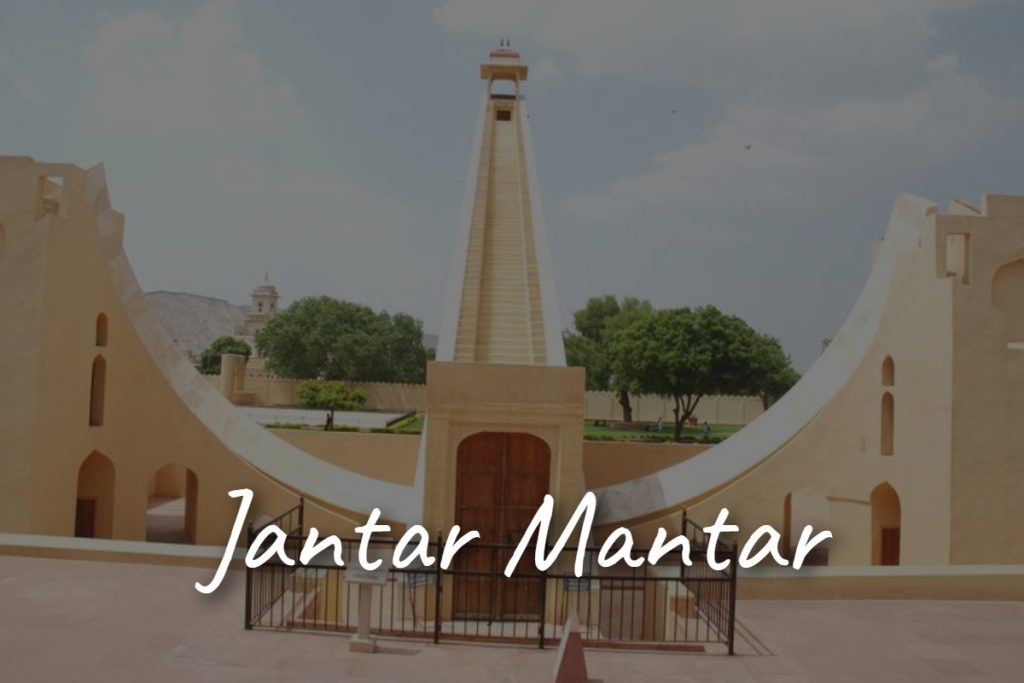
Jantar Mantar
Jantar Mantar is a fascinating place for astronomy lovers. This site has big instruments that measure time and stars with great accuracy.
Astronomical Instruments
Jantar Mantar is home to the largest stone astronomical observatory in the world. Built between 1727 and 1733 by Raja Sawai Jai Singh, it has a total of nineteen stone and brass instruments.
These tools were used for celestial measurements and timekeeping. Each instrument has unique designs, showing ancient technology and geometric precision.
This observatory is a UNESCO World Heritage Site. It highlights the importance of astronomy in history. Visitors can explore the various instruments that showcase scientific tools used to understand the stars and planets.
The Jantar Mantar stands as a historical landmark, celebrating the marvels of ancient science.
Also Read – 10 Unique Places To Visit In Mumbai With Family
Guided Tour Options
Visiting Jantar Mantar offers a great chance to learn about astronomy. Guided tours make this educational experience even better.
- Hire a Knowledgeable Guide
A guide can explain the astronomical instruments. They share stories of how these tools were used in the past. Their insights add depth to your visit. - Entry Fee and Timings
The entry fee is INR 200 for foreigners and INR 40 for Indians. Open hours are from 9:00 AM to 4:30 PM, so plan your visit accordingly. - Detailed Observations
Take time to observe each instrument closely. A guide will help highlight unique features you might miss on your own. - Educational Experience
The tour provides an opportunity to explore ancient technology. You’ll learn how people measured time and position of stars centuries ago. - Cultural Heritage
This site is not just about science; it’s also a cultural landmark. Your guide can connect the past with present events in Jaipur. - Sightseeing Opportunity
Tours often include other parts of Jaipur too, making it a full day of sightseeing. Combine your visit to Jantar Mantar with nearby attractions for more fun! - Group Options Available
Joining a group tour can enhance your experience even more. Meeting others makes learning enjoyable and less lonely. - Private Tours For Customized Experiences
Opt for private tours if you prefer a personal touch and want to explore at your own pace. - Best Time for Visits
Early morning or late afternoon visits are ideal due to cooler temperatures and fewer crowds. - Book in Advance
It’s wise to book guided tours ahead of time, especially during peak tourist seasons like winter months.
Guided tours enrich your trip at Jantar Mantar while giving you insights into its fascinating history!

Jaigarh Fort
Jaigarh Fort stands tall on a hilltop. It offers stunning views of the landscape below.
Panoramic Views
Jaigarh Fort offers stunning panoramic views of the surrounding landscape. This fort sits 10 km from the city center. It connects to Nahargarh Fort, making it simple to visit both places.
The fort’s ramparts provide a scenic overlook of the mountains.
Visitors love to watch the sunset from here. The colors in the sky during sunset are breathtaking. Each moment feels special as the sun dips behind the hills. Stay safe while exploring the defense walls and enjoy the view!
The Cannon Display
Jaigarh Fort features an impressive Cannon Display. The fort was built in 1762 by Jai Singh II. It is home to the world’s largest cannon on wheels, named ‘Jaivana.’ This massive artillery piece shows the strength of historical architecture in the area.
Visitors can see the cannon and learn about military weaponry from the past.
The entry fee is INR 85 for foreigners and INR 35 for Indians. Timings are from 9:30 AM to 4:30 PM. The fort offers stunning views and a glimpse into the defensive structures of its time.
It’s a significant tourist destination, attracting many history buffs and travelers.
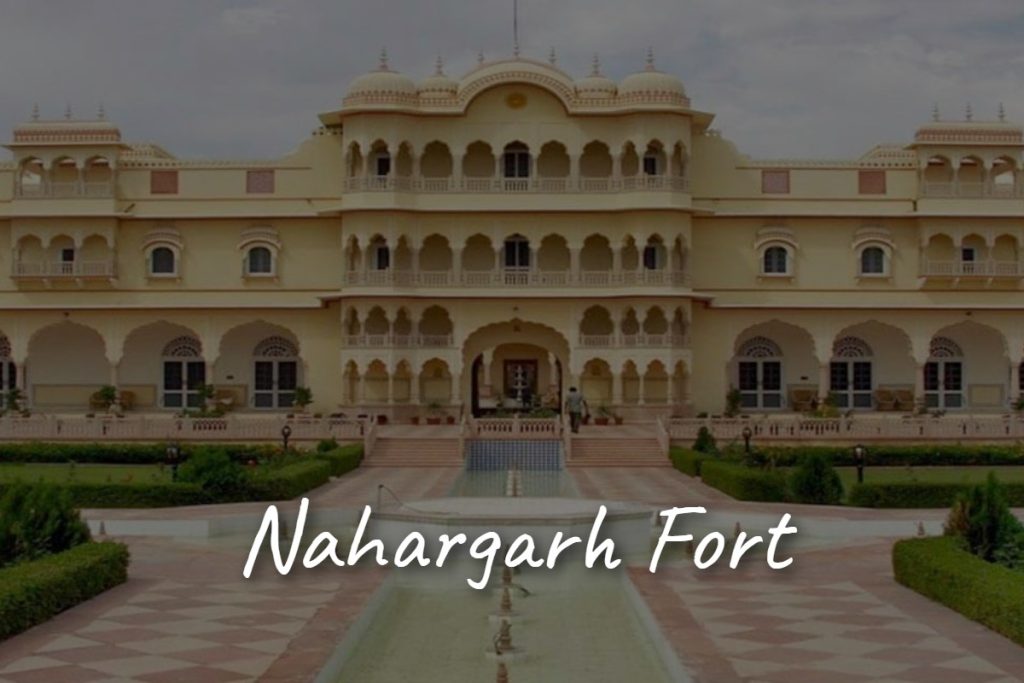
Nahargarh Fort
Nahargarh Fort offers stunning sunset views over Jaipur. You can also explore nearby attractions for a full day of fun!
Sunset Views
Nahargarh Fort offers stunning sunset views. This historical fortress stands on a hilltop. It provides a majestic citadel with a panoramic sunset view. Visitors can enjoy a scenic overlook of Jaipur as the sun sets.
The colors in the sky create a spectacular vista.
Tips for the best experience include arriving early. Find a good spot to enjoy the view. Don’t forget your camera to capture the stunning twilight panorama. This fortress showcases defensive architecture and serves as a beautiful escape to witness nature’s beauty.
Nearby Attractions
Jaipur is full of fascinating places. Nahargarh Fort connects to Jaigarh Fort and offers stunning views. Here are some nearby attractions to explore:
- Jaigarh Fort
This fort has strong walls and beautiful architecture. It’s known for the huge cannon called Jaivana. The fort gives amazing views of the city. Don’t miss it! - Nahargarh Fort
This hilltop fortress is perfect for sunset views. You can see the entire city spread out below you. It’s a great spot for photos too. - Amer Fort
Just a short ride away, Amer Fort is known for its elephant rides. The light and sound show at night tells the history of Jaipur, making your visit special. - Jal Mahal
Located in a lake, this palace looks magical, especially at dawn or dusk. Bring your camera for stunning pictures! - Sisodia Rani Garden
These gardens are a peaceful escape from the city buzz. Colorful flowers and fountains create a relaxing atmosphere. - Panchayati Raj Museum
A small museum but it highlights Rajasthan’s local governance system through interesting exhibits. - Gaitor Ki Chhatriyan
This site has beautiful tombs of Maharajas with intricate carvings that showcase royal architectural styles. - Chokhi Dhani
Experience traditional Rajasthani culture here! Enjoy folk dances, local food, and crafts in this village-themed resort. - Vidyadhar Gardens
A serene garden designed in Mughal style with lovely pathways and pools creates a calm retreat amid chaos. - Birla Mandir (Laxmi Narayan Temple)
This white marble temple dedicated to Lord Vishnu stands out beautifully against the blue sky, offering peace and tranquility.
These attractions make your trip to Jaipur even better!
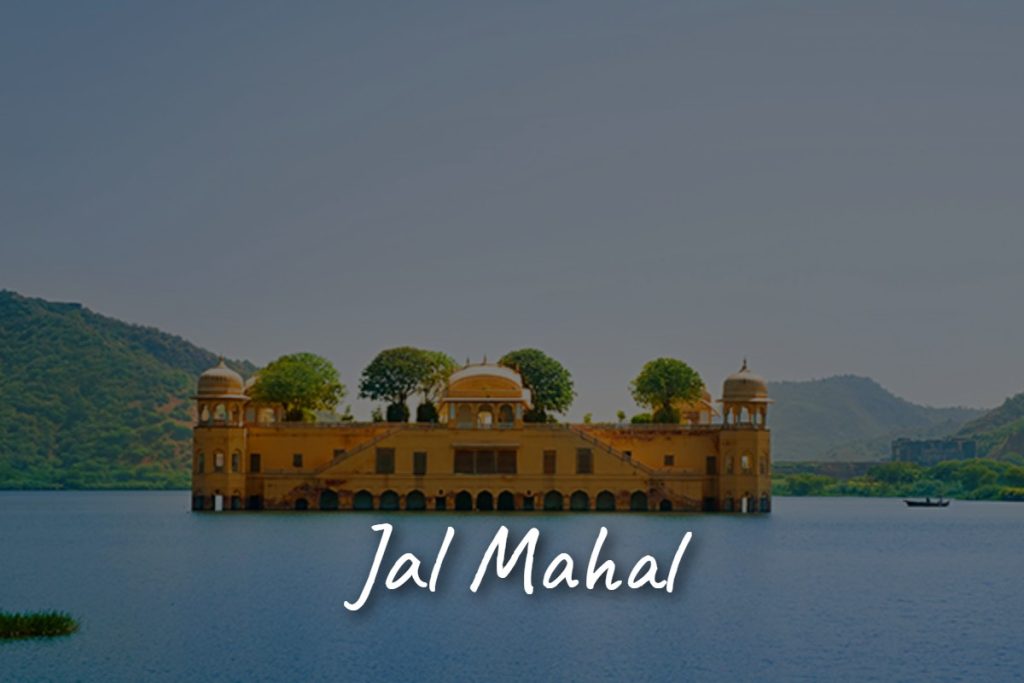
Jal Mahal
Jal Mahal sits beautifully in the middle of Man Sagar Lake. Its stunning views and unique architecture make it a favorite spot for pictures, especially at sunset.
Waterfront Location
Jal Mahal has a stunning waterfront location. Built in the 1750s by Maharaja Madho Singh, it sits gracefully in Man Sagar Lake. This low-rise palace is symmetrical and blends perfectly with its surroundings.
Visitors enjoy the beautiful views of the lake and the surrounding hills. The calm waters add to the charm. Perfect for photography, this spot is a must-see for anyone in Jaipur.
Next, let’s explore the unique structure and design of Hawa Mahal.
Photography Tips
After admiring the beauty of Jal Mahal, it’s time to capture those moments. Good photos show the charm of this location.
- Best Time for Photos: Early morning or late afternoon is ideal. The light is soft and warm, giving a magical look.
- Use Natural Frames: Look for tree branches or arches around Jal Mahal. They can frame your shot nicely.
- Photography Angles: Try different angles. Shoot from the water’s edge for a unique perspective, or go higher for panoramic views.
- Golden Hour Magic: The hour just after sunrise and before sunset is known as the golden hour. Use this time to get stunning shots.
- Adjust Photography Settings: Set your camera to a lower ISO during daylight. This helps keep images sharp and clear.
- Keep an Eye on Composition: Follow the rule of thirds in your shots. Place key elements along the grid lines to create balance.
- Experiment with Reflections: Capture reflections in the water for beautiful effects. It adds depth to your photos.
- Be Ready for Action Shots: People feeding birds or boating nearby can add life to your pictures. Stay alert and ready!
- Capture Local Life: Include local vendors or tourists in your frames to show the vibrant life around Jal Mahal.
- Bring Photography Equipment: A tripod is useful if you want stability, especially during low-light conditions at dusk.
- Stay Safe While Shooting: Be cautious near water edges and respect others’ space while photographing.
- Entry Fee Reminder: Foreigners pay INR 50; Indians pay INR 10 to enter between 9 AM and 5 PM.
These tips will help make your photography experience at Jal Mahal unforgettable!
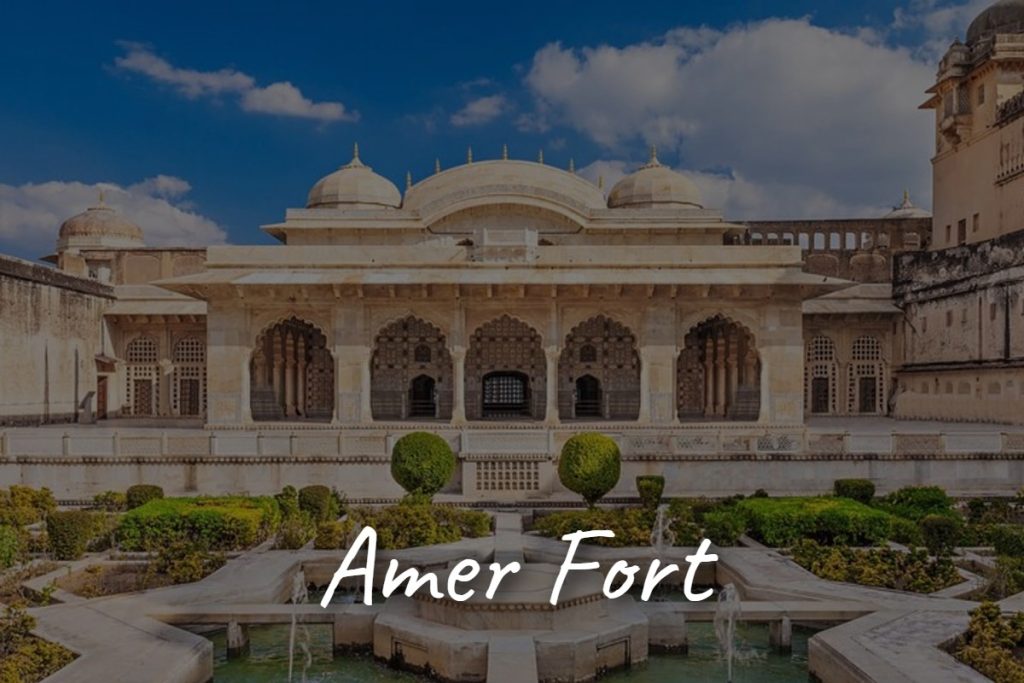
Amer Fort
Amer Fort is a stunning place to explore. The fort offers elephant rides and an exciting light and sound show that tells its story.
See Also – Birla Mandir, Jaipur – Timings, History, And How To Reach Guide
Elephant Rides
Elephant rides at Amer Fort offer a fun experience for visitors. You can ride these gentle giants up the hill to the fort. The ride gives a unique view of the surroundings. Each ride lasts about 20-30 minutes, making it a memorable adventure.
Local guides are available to share stories about the elephants and their care. The elephants are well-trained and loved by their handlers.
Experiencing an elephant safari is a highlight of Jaipur sightseeing. It adds a touch of culture to your trip. Make sure to book in advance to ensure a spot. After your ride, explore the fort and its rich history.
Next, discover the magic of the Light and Sound Show at Amer Fort.
Light and Sound Show
After enjoying the elephant rides, visitors can experience the Light and Sound Show at Amer Fort. This show combines bright lights with music to tell the fort’s rich history. It is a radiant and acoustic exhibition that captivates the audience.
The display features a dazzling illumination and audio presentation. Guests should not miss the evening show, as it creates a magical atmosphere. With colorful lights and melodic sounds, this spectacle makes for a memorable night at the fort.

Bhangarh Fort
Bhangarh Fort is known for its spooky stories and legends. Many say it’s one of the most haunted places in India, which makes it a must-visit for thrill-seekers.
Legends and Myths
Bhangarh Fort is famous for its spooky stories. Many people say it is haunted. This fort has a long history filled with legends and myths. One tale tells of a prince who fell in love with a beautiful princess.
He tried to win her heart with magic. But the magic backfired, and a curse fell on the fort. Visitors often feel an eerie presence here. Some even claim to see shadows moving in the night.
This fort is known as one of the most haunted places in India. Many tourists come to hear ghost stories and explore the ancient ruins. While it’s thrilling, safety guidelines are important.
It is best to visit during the day. Night visits are not allowed. The stories of Bhangarh Fort add to its mysterious charm. Travelers seeking thrills find excitement in its legends.
Safety Guidelines
Safety is key when visiting Bhangarh Fort. Follow these guidelines for a smooth trip.
- Wear Comfortable Shoes: The terrain can be rough. Proper footwear will keep your feet happy.
- Stay Hydrated: Bring drinking water with you. Water intake is vital, especially in the heat.
- Dress Comfortably: Choose suitable attire for the weather. Comfortable clothing makes your visit enjoyable.
- Bring Extra Water: Hydration is important during your hike around the fort. Carry enough water to stay refreshed.
- Keep an Eye on Your Surroundings: Stay aware of where you are going. This will help you stay safe as you explore.
- Visit During Daylight Hours: Exploring in the light is safer than at night. Plan your trip accordingly for a better experience.
- Avoid Straying Off Path: Stick to marked paths when walking around the fort. This ensures safer navigation through the area.
Following these tips will help you enjoy Bhangarh Fort’s magic without worry… Next up, let’s explore Sheesh Mahal and its stunning mirror artwork!
See Also – Mehandipur Balaji Temple Distance From Major Cities

Sheesh Mahal
The Sheesh Mahal is famous for its stunning mirror artwork. Visit during the day for the best light, and watch how it sparkles!
Mirror Artwork
Sheesh Mahal showcases stunning mirror artwork. This unique feature creates mesmerizing reflective effects that capture the light beautifully. Constructed in 1727, it highlights the rich artistry of Jaipur’s heritage.
Visitors can see intricate mirror designs and glass artwork throughout the structure. Photography is allowed inside, but flash is not permitted to protect the delicate mirror embellishments.
Next, let’s explore the best visiting hours for Sheesh Mahal.
Best Visiting Hours
Visiting hours for Sheesh Mahal are from 9:30 AM to 4:30 PM. Daytime is the best time to visit. The natural light creates amazing reflections in the mirror artwork. This makes for great photography.
Please avoid using a flash while taking pictures inside.
Next, we will explore the unique features of Amber Fort.
Conclusion
Jaipur is full of wonders. The city’s rich history and vibrant culture shine through its top attractions. Each site, from Amer Fort to Hawa Mahal, offers a unique experience. Explore these gems for unforgettable memories.
Enjoy every moment in the Pink City!

Deepak Sharma is a passionate writer and avid traveler who specializes in uncovering the beauty and history of India’s attractions and temples. A graduate of Delhi University, Deepak has a deep-rooted love for his country and its rich cultural heritage.
